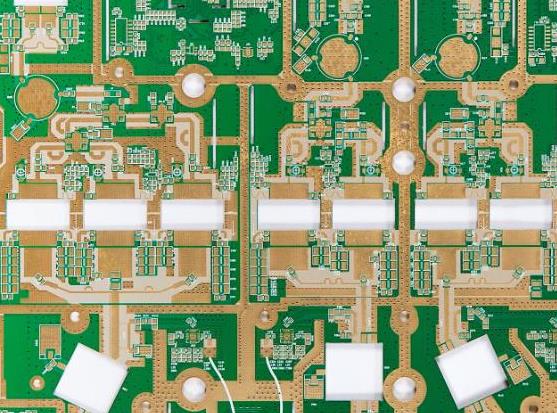1. Power supply noise
In the high-frequency PCBcircuit, the noise of the power supply has a particularly obvious influence on the high-frequency signal. Therefore, the first requirement is that the power supply is low-noise. Here, a clean ground is as important as a clean power source. Why?. Obviously, the power supply has a certain impedance, and the impedance is distributed on the entire power supply, therefore, noise will also be superimposed on the power supply. Then we should reduce the impedance of the power source as much as possible, so it is best to have a dedicated power layer and ground layer. In high-frequency circuit design, the power supply is designed in the form of layers, and in most cases it is much better than the design in the form of a bus, so that the loop can always follow the path with the least impedance. In addition, the power board has to provide a signal loop for all generated and received signals on the PCB, so that the signal loop can be minimized, thereby reducing noise, which is often overlooked by low-frequency circuit designers.

There are several ways to eliminate power supply noise in PCB design.
1. Pay attention to the through holes on the board: the through holes make the power layer need to etch openings to leave space for the through holes to pass through. If the opening of the power layer is too large, it will inevitably affect the signal loop, the signal is forced to bypass, the loop area increases, and the noise increases. At the same time, if some signal lines are concentrated near the opening and share this loop, the common impedance will cause crosstalk.
2. Connecting wires need enough ground wires: each signal needs to have its own proprietary signal loop, and the loop area of the signal and loop should be as small as possible, that is to say, the signal and the loop should be parallel.
3. The power supply of analog and digital power supply should be separated: high-frequency devices are generally very sensitive to digital noise, so the two should be separated and connected together at the entrance of the power supply. If the signal needs to cross the analog and digital parts, it can be Place a loop at the crossing to reduce the loop area.
4. Avoid overlapping of separate power supplies between different layers: otherwise circuit noise is easily coupled through parasitic capacitance.
5. Isolate sensitive components: such as PLL.
6. Place the power line: In order to reduce the signal loop, reduce the noise by placing the power line on the edge of the signal line.
2, the transmission line
There are only two transmission lines possible in PCB: strip line and microwave line. The biggest problem of transmission line is reflection. Reflection will cause many problems. For example, the load signal will be the superposition of the original signal and the echo signal, which increases the difficulty of signal analysis. ; Reflection will cause return loss (return loss), and its impact on the signal is as serious as the impact of additive noise interference:
1. The signal reflected back to the signal source will increase the system noise, making it more difficult for the receiver to distinguish the noise from the signal;
2. Any reflected signal will basically degrade the signal quality and change the shape of the input signal. In principle, the solution is mainly impedance matching (for example, the interconnection impedance should match the impedance of the system very well), but sometimes the impedance calculation is more troublesome, you can refer to some transmission line impedance calculation software.
The method to eliminate transmission line interference in PCB board design is as follows:
(a) Avoid discontinuities in the impedance of the transmission line. The point where the impedance is discontinuous is the point where the transmission line has abrupt changes, such as straight corners, vias, etc., which should be avoided as much as possible. The methods are: avoid straight corners of the trace, try to go for 45° angles or arcs as much as possible, and large bends are also possible; use vias as little as possible, because each via is an impedance discontinuity point, and the outer layer signal should not pass through The inner layer, and vice versa.
(b) Do not use stake lines. Because any stub is a source of noise. If the stub line is short, you can terminate it at the end of the transmission line; if the stub line is long, the main transmission line will be used as the source, which will cause large reflections and complicate the problem, so it is not recommended to use it.